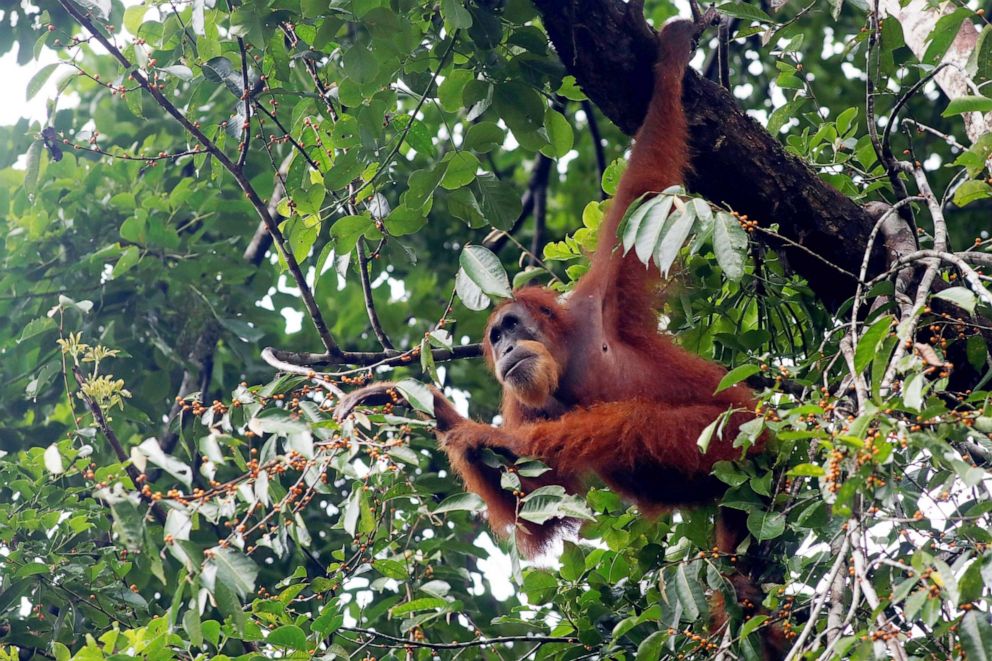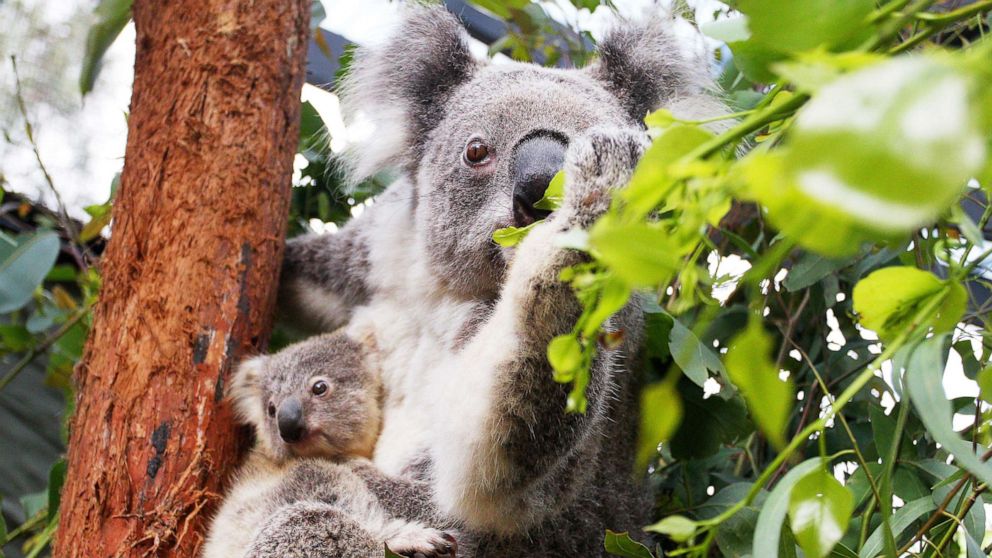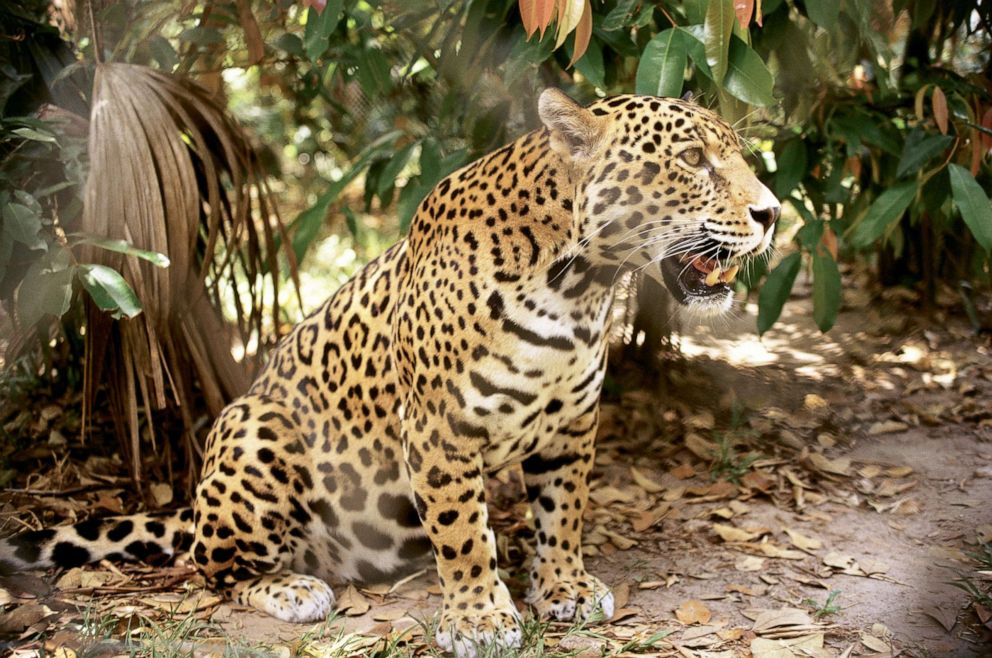How Many Animals Have Been Killed By Deforestation
The mass-immigration of trees will exist the doom of many forms of life on this planet.
Forests are critical to the Earth'south ecology. They capture and store carbon out of the atmosphere. They can alter the air quality and quantity of drinking h2o. And they provide the most habitat for the world'southward terrestrial species.
And notwithstanding, alarming rates of deforestation are continuing all over the globe, despite warnings from scientists and urgent calls from environmental activists to cease the clearing as much as possible.
The planet is losing an estimated 137 species of plants, animals and insects every day due to deforestation, according to the World Animal Foundation.
Here are iv of import species at run a risk of extinction, each in a region heavily affected by deforestation.
Harpy eagle, the Amazon rainforest
Populations of the harpy hawkeye, i of the largest eagle species in the globe, are dwindling as tree canopies in the Amazon rainforest disappear, and along with it the habitat for the eagles' preferred prey, a new report published Wednesday in Nature Scientific Reports found.
The eagles rely on specific prey that live in the canopy forests: two-toed sloths, brown capuchin monkeys and grey woolly monkeys, merely as the food supply decreased, the eagles did not switch to alternative prey, the researchers establish.
The eagles would and so deliver prey to their hatchlings less oft, and when they did, the animals tended to take a smaller estimated weight in landscapes with 50% to 70% deforestation, according to the study.
The researchers observed multiple eaglet deaths from starvation and did not locate any nests in areas with more than than 70% deforestation.

A Harpy Eagle perches on tree branch exterior Panama City on June 17, 2013.
Rodrigo Arangua/AFP via Getty Images, FILE
Brazil is home to 2.one million square miles of rain forest -- more than 65% of all the rain forest in the world, co-ordinate to the World Animal Foundation.
Simply because of the Brazilian government's dedication to meat and leather merchandise, most 15% of the world's tropical wood cover was cleared betwixt 1991 and 2004, according to the Foundation.
The harpy eagle is at risk of disappearing in a similar style equally 10 mammal, 20 bird and eight amphibian species during three decades of deforestation, according to the foundation. The species is listed as near threatened, with a decreasing population, on the International Union of Conservation of Nature's Scarlet List of Threatened Species.
Apex predators are threatened around the globe, and their extinctions are oft driven past failure to acquire prey due to "severe casualty scarcity," according to researchers.
Sumatran orangutan, Southeast Asia
The palm oil manufacture, 85% of which is produced in Indonesia and Malaysia, has wiped out a critical amount of trees in Southeast Asia -- and with it, many endangered species.
Less than 80,000 orangutans are left in the world, and all of them live in Indonesia and Malaysia. Their habitats are under "constant threat" of deforestation, co-ordinate to the Earth Wildlife Fund. Up to iii,000 are killed every year, according to the Orangutan Salvation.
The trees are cleared by illegal logging and for conversion from pelting forests to palm oil plantations. About 80% of the orangutan's habitat was cleared in the 1990s and early on 2000s by degradation, fragmentation and clearing -- and sometimes past intentionally ready fires, the mag Scientific American reported.

A Sumatran Orangutan Pongo forages in Southeast Aceh, Indonesia. April 4, 2021.
Xinhua News Agency/Getty Images, FILE
Orangutans are agile climbers and "supremely adapted to life in trees," and it's rare for adult orangutans to always touch the ground, according Scientific American.
The orangutans are and so forced to new areas in search for nutrient, ofttimes bringing them in contact with humans, which leads to them existence killed as "pests," co-ordinate to the Orangutan Conservancy.
Poachers are also targeting orangutans for the bush meat merchandise, ironically oft by loggers who are clearing the forest, since the logging companies do non provide food for the workers, according to the magazine.
The Sumatran orangutan is listed equally critically endangered on the IUCN's Red List.
Koala, Australia
Koalas take been on the reject due to deforestation even earlier the 2019 Australian bushfires wiped out an estimated 5,000 of the marsupials.
Between 2012 and 2016, at least 5,183 koalas were killed due to the bulldozing of trees, the World Wildlife Fund Australia establish.
The koalas live in eucalyptus trees in forests and woodland, using them as both food and shelter. The habitats are left fragmented or completely destroyed equally a outcome of the clearing, and they are forced to the ground to seek alternative shelter. They are often hit by cars, attacked past dogs or contract diseases, according to WWF Australia.
"If you lose your home and your nutrient source and so you are doomed," Deborah Tabart, chairman of the Australian Koala Foundation, told ABC News over email.

A Koala joey is comforted past its mother in Sydney, Australia, March 2, 2021.
Lisa Maree Williams/Getty Images, FILE
Protecting the habitat is the "simply way" to save the species, Tabart said. The Australian Koala Foundation has proposed the Koala Protection Human action, which would focus on protecting trees, including habitats that are empty. While current federal legislation focuses on protecting the koala species itself, its habitat "is almost impossible to protect," co-ordinate to the foundation.
The organization is as well calling for a moratorium on logging of native forests, protection of all koala habitat and ameliorate direction of plantation forests side by side to koala habitats.
The species is listed as vulnerable with a decreasing population on the IUCN'south Red List. At the current rate, koalas could become extinct by 2050, according to WWF Australia.
Jaguar, The Americas
Populations of the largest species of true cat in the Western Hemisphere are continuing to decrease due to loss of habitat.
While jaguars tend to live in habitat with dense tree canopy encompass, such as the Amazon rainforest in Brazil or the Maya Woods in Primal America, their range historically came every bit far northward every bit New Mexico and Arizona, co-ordinate to the U.S. Fish and Wild fauna Service.
The big cats require expansive areas of country for survival, just their current range is now just 51% of its celebrated range, according to the IUCN.
Accelerated deforestation continue to threaten the jaguar habitat, peculiarly when it occurs in corridors that connect conservation areas, according to a 2016 written report published in the scientific journal Biological Conservation. Without the corridors to travel through, the populations can get isolated and lose genetic diverseness, which could so touch on the short and long-term survival of the species.

A North American Jaguar sits in Belize, Jan. 01, 1990.
Universal Images Group via Getty Images, FILE
In Gran Chaco, S America's largest tropical dry wood located in Argentina, Paraguay and Republic of bolivia, most a third of disquisitional jaguar habitat has been lost since the mid-1980s due to deforestation driven by agronomical expansion, a study published in Biodiversity Research in 2019 found.
There is a possibility that jaguars could reestablish a population in the United States through Mexico, which is the current northern border of the range, Dan Thornton, assistant professor in the Washington State University School of the Environment and i of the authors of the study, told Washington State Magazine.
Jaguars are listed a nearly threatened with a decreasing population on the IUCN's Blood-red List. They are then elusive, that it is difficult to estimate how many are left in the wild, according to the World Wildlife Fund.
This story was originally published on July 3, 2021.
Source: https://abcnews.go.com/US/mass-deforestation-wiping-species-world/story?id=78564880
Posted by: smithalitill.blogspot.com

0 Response to "How Many Animals Have Been Killed By Deforestation"
Post a Comment